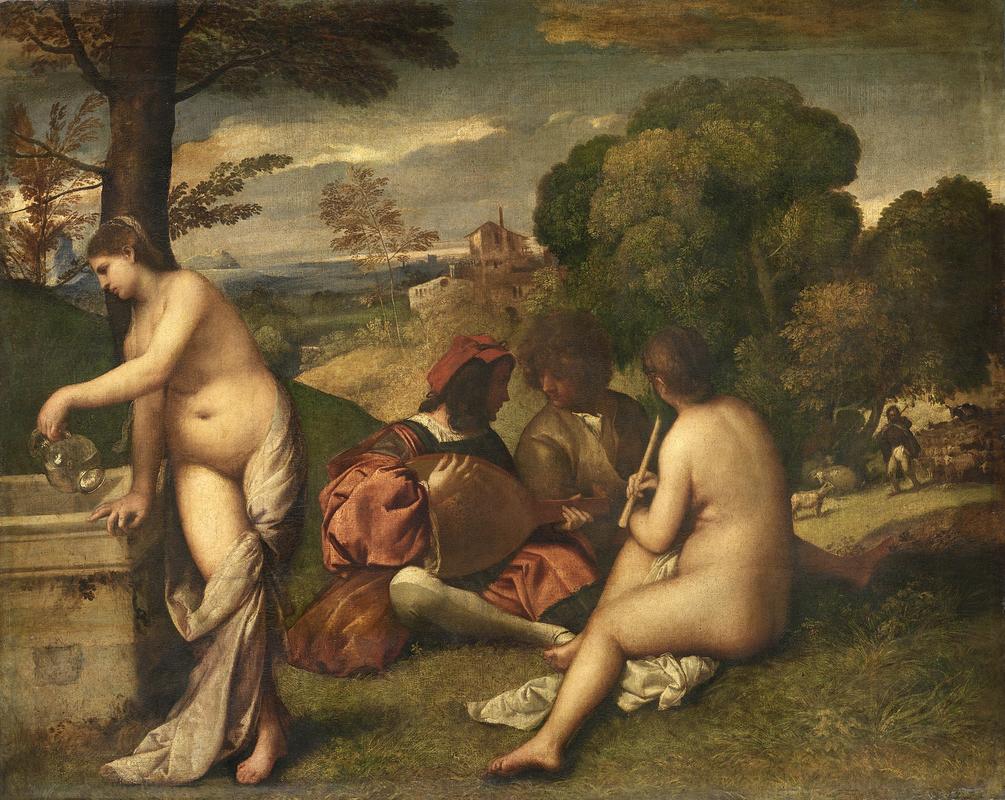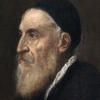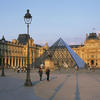More about Pastoral Concert

Contributor
Le Concert champêtre, or Pastoral Concert, dates from the earlier part of Titian's career, when the artist was just emerging from the tutelage of Giorgione as an independent artist.
Nothing is known of the origins of this celebrated picture, the iconographic interpretation of which continues to be hotly debated. Equally contentious is the question of its authorship…
Although Titian was an assistant of Giorgione, critics generally preferred Titian's work, which caused a rivalry between the two artists. It is ironic that even today there is a controversy as to which artist created the Pastoral Concert, or whether they did it collaboratively. We do know that Manet used the painting as the model for his 1863 painting Le Déjeuner sur l'herbe (The Luncheon on the Grass), which scandalized critics for its depiction of nude women in 19th century French society.
Manet's friend Antonin Proust related that Manet was inspired by the image of a woman bathing in the Seine at Argenteuil, and that Manet said, "I copied Giorgione's women, the women with musicians. It's black that painting. The ground has come through. I want to redo it and do it with a transparent atmosphere with people like those we see over there."
While some writers contend that the two nude women are muses referring to Aristotle's distinction between lyric poetry and the more everyday lyricist, Hugh Honour and John Fleming contend that the painting is "entirely without any discernible narrative content, mythological or otherwise." They add that "the theme might possibly be harmony, though whether harmony between man and nature, or the sexes, or classes of society or simply of musical instruments, we are left to guess." It's remarkable that Honour and Fleming's tone, speculative, puzzled, and timid, is typical of writing on this painting, which many writers consider to be the pinnacle of painting in this style and period. In a sense the Concert, although "entirely secular," has carved out a sacred place for itself beyond clear iconography, authorship, and narrative, although this indefiniteness only adds to its attractiveness to both writers and artists.
Finally, it is an early example of the "male gaze" as theorized by feminist film theorist Laura Mulvey, whereby the viewer of the painting inhabits an aspect of the passion of the man to unveil, reveal, and possess the woman.
Sources
- Eastham, Andrew. Aesthetic Afterlives: Irony, Literary Modernity and the Ends of Beauty. London: A&C Black, 2011.
- Honour Hugh, and John Fleming. A World History of Art. London, Laurence King Publishing, 2005.
- Humfrey, Peter. Titian. London: Phaidon, 2007.
- Magi, Giovanna. The Grand Louvre and the Musee D'Orsay. Florence: Casa Editrice Bonechi, 1998.
- Mulvey, Laura. Visual and Other Pleasures. Berlin: Springer, 1989.
- Rubin, James H., and Olivia Mattis. Rival Sisters, Art and Music at the Birth of Modernism, 1815-1915. London: Ashgate Publishing, Ltd., 2014.
- Tinterow, Gary, and Henri Loyrette. Origins of Impressionism. New York: Metropolitan Museum of Art, 1994.
Featured Content
Here is what Wikipedia says about Pastoral Concert
The Pastoral Concert or Le Concert Champêtre is an oil painting of c. 1509 attributed to the Italian Renaissance master Titian. It was previously attributed to his fellow Venetian and contemporary Giorgione. It is located in the Musée du Louvre in Paris.
This painting was created between approximately 1509 and 1510; the exact date of its creation is unknown. This period also represents a turbulent period of history in Venice, specifically the League of Cambrai's War in 1509. Art historian Jonathan Unglaub suggests that this painting was painted in response to the war, providing an "idyllic refuge from the ravages of history."
The term "Concert Champêtre" was first used in 1754 by Nicolas Bernard Lépicié, to describe this painting. But when it entered the Louvre in 1792 it was given the title of a Fête champêtre, a genre arguably based on this painting. It is believed to display the Renaissance admiration of classical poetry, an essential value of humanism. This painting is also considered the origin of a genre of Pastoral paintings, because of its connection to pastoral poetry, as seen by the young men gathering in the Italian countryside's lush, picturesque greenery. The pastoral concert or Fête Champêtre genre is described as a gathering in a picturesque landscape. Usually, young men are gathered together in a creative pursuit, seated on the landscape's grass. The paintings themselves are almost always allegories or depictions of mythological characters. This is the 16th-century genre; in the French-led 18th-century type, women are very prominent.
This painting is an example of the Venetian school of Italian Renaissance art. Paintings from Venice are characterized as having rich color schemes that create a "warm glow" and emphasize naturalism above all else. Venetian paintings also have a specialty in mythological and allegorical themes. The unique use of color is known as colorito, and it was most often found in Venetian painting.
The patronage of this painting remains unknown. Isabella d'Este is a possible candidate for patron due to a so-called bagno scene she commissioned for her brother Alfonso I d'Este, Duke of Ferrara. Still, the word bagno is considered to describe a painting by Palma Vecchio, another Venetian painter active during the same period.
Check out the full Wikipedia article about Pastoral Concert












